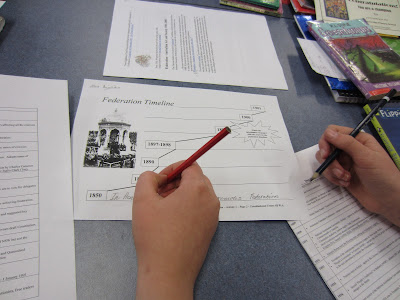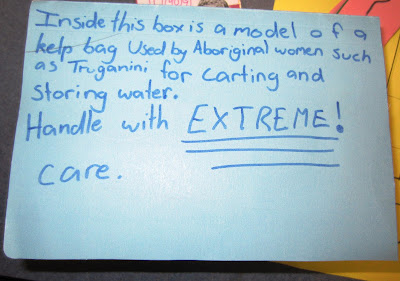Most students wrote three to eight poems after this session and I will get them to add them to this blog this coming week. I have several of his poetry books in the classroom and currently have a poetry display of a wide range of books on the large board which runs across the back of the classroom. Most of the students borrowed a poetry book from the library last Tuesday.
On a happier note, and to see just how vibrant this brilliant man is, enjoy Michael reciting some of his dustbin poetry:
Stay tuned to this blog entry for updates on our poetry effort:
Down behind the dustbin
I met a dog called Ollie.
I asked him,"Can you ride a scooter?"
He said, "No," but I can ride a trolley."
By KB
Down behind the dustbin
I met a dog called Dunk.
He was hard to talk to though
Because he was very drunk.
By TM
Down behind the dustbin
I meta dog called Mustard.
"Don't disturb me now," he said.
"Iam eating up my custard."
By NS
Down behind the dustbin
I met adog called Viv.
She'd just taken a pill
And she didn't want to live.
byVL
Down behind the dustbin
I met a dog called Frank.
I asked him what he'd bought.
He said, "I bought an army tank."
By VL
Down behind the dustbin
I met a dog called Ted.
He said, "Leave me alone
I am just going to bed."
By NS
Down behind the dustbin
I met a dog called Bob.
He'd just fixed up his fence.
So I said, "You're doing a good job."
By NS
Down behind the dustbin
I met a dog called Roger.
"Do you own this bin?" I asked.
"No, I'm just the lodger."
By GL
Down behind the dustbin
I met a dog called Claude.
"What are you doing?" I asked.
"I'm playing on the Smartboard."
By GL
Down behind the dustbin
I met dog called Grace.
She was looking through some cards,
Trying to find an ace.
By GL
Down behind the dustin
I met a dog called Sam.
He felt very hungry,
So I gave him some him.
By KK
Down behind the dustbin,
I met a dog called Grace.
"Why are you so puffed?" I asked.
"I just won a race."
By JS
Down behind the dustbin,
I met a dog called Pat.
"What are you doing here?' I asked.
"I'm chasing that cat."
By JS
Down behind the dustbin
I met a dog called Ollie.
"What are you doing here?" I asked..
"I'm just buying a lolly."
By OF-W
Down behind the dustbin
I met a dog called Finn.
He was putting on a wig,
But it was far too thin.
By OF-W
Down behind the dustbin
I met a dog called Bail.
He said, "Please go away!
I'm trying to hold a sale."
By AK
Down behind the dustbin
I met a dog called Smoke.
He was blue in the face
He was about to choke.
By AK
Down behind the dustbin
I met a dog called Smudge.
"Leave me alone!" he said.
"I'm trying to eat my fudge."
By TR
Down behind the dustbin
I met a dog called Frank.
"Please come in he said.
"I'm making up a prank."
By TR
Down behind the dustbin
I met a dog called Oskar.
"What are you doing/" I asked.
"Me? Just packing my Toasca."
By OF
Down behind the dustbin
I met a dog called Tracy.
She was trying on a dress,
Which was very, very lacy.
By OF
Down behind the dustbin
I met a dog called Sting
"Don't disturb me," he said.
"I can't find my bling".
By GK
Down behind the dustbin
I met a dog called Heather
She was in a bad mood
'Cause she lost her feather.
By GK
Down behind the dustbin
I met a dog called Frank.
He was wearing his bathers,
And swimming in a tank.
By TJ
Down behind the dustbin
I met a dog called Chuck.
He said, "Help me please,
I'm feeling rather stuck."
By TJ
The second lesson: October 22nd. We focused on some of the language needed for unpacking poetry such as alliteration, hyperbole, simile, metaphor, paradox, assonance, onomatopoeia, rhyme, personification, irony, among others and these were the spelling bingo words for the week. The students chose six terms to unpack and produced a describing wheel giving a definition of each, and an accompanying example. I will post a couple of wheels here tomorrow.
The third lesson:
Today October 24rd we focused on a poem using the
abcb rhyme scheme but with the added component of alliteration. We also focused on line length. In group students unpacked the pattern of the poem using their Writer's Notebooks and brainstormed animals and thought about the rhyme scheme. They began writing their own poems following this format. This will be the second poem they will publish in their poetry sequence. Here is the poem we looked at and discussed:










.jpg)













.JPG)
.JPG)
.JPG)
.JPG)
.JPG)
.JPG)














































